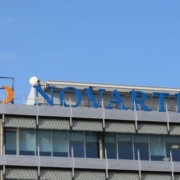Some of the best medicines happen by accident, according to BioSpace. The discovery of insulin began with two doctors removing the pancreas of a healthy dog in an attempt to understand its impact on digestion. Penicillin grew out of an unrelated scientific experiment involving Staphylococcus bacteria colonies. Will someone one day write the same of Novartis’ branaplam in correlation with Huntington’s disease?
Research Roundup: Neurons Key to Parkinson’s ID’ed, New ALS Mechanism Discovered
Amyotrophic Lateral Sclerosis (ALS), Brain Stem, Cardiovascular Disease, COVID-19 Vaccines, Diabetes, Diet, Efficacy, Frontotemporal Dementia (FTD), Gut, Immune System, Johns Hopkins, National Institutes of Health, Neurons, Obesity, Parkinson's Disease, R&D, Severe Covid-19Researchers at the University of Copenhagen – The Faculty of Health and Medical Sciences found that activating a specialized group of neurons within the brainstem of mice restored full movement function in mice with symptoms of Parkinson’s disease.
Researchers have unlocked a key mechanism behind the genetic variant which could prove hopeful for new treatments for amyotrophic lateral sclerosis (ALS) and frontotemporal dementia (FTD).
Research Roundup: Regrowing Nerve Cells in Spinal Cord Injuries and More
Breast Cancer, Cancer Cell, Cells, Central Nervous System, COVID-19 Vaccines, DNA, Glaucoma, Integrin inhibitors, Mammalian, Nanoparticles, Nerve Cells, Neurons, Northwestern University, Pregnancies, Spinal Cord, UC Berkeley, Washington University School of Medicine in St. LouisInvestigators at Washington University School of Medicine in St. Louis identified a compound that can help sensory neurons in the central nervous system to heal.
Biogen reported positive topline results from the company’s Phase II CONVEY trial of vixotrigine for the treatment of small fiber neuropathy (SFN).
The Feinstein Institutes for Medical Research, the research unit of New York State health care provider Northwell Health, may have found a way to control neurons that drive inflammation.
Working through two subsidiaries, life sciences giant Bayer is taking multiple shots at Parkinson’s disease. In addition to Bayer’s efforts to tackle Parkinson’s, Adhera Therapeutics announced that the company will acquire a new class of drug aimed at the disease.
Research Roundup: Compound Reverses ALS Nerve Damage and More
Amyotrophic Lateral Sclerosis (ALS), Clinical and Translational Medicine, Genes, Glaucoma, HAND2 Gene, Mayo Clinic, Nerve Damage, Northwestern University, Pregnancies, R&D, Research, Rice University, Scientific studies, Tuberculosis, University of Buffalo, Upper Motor NeuronsResearchers at Northwestern University identified a compound that appears to reverse the ongoing degeneration of upper motor neurons associated with amyotrophic lateral sclerosis (ALS).
Research Roundup: CovidD-19 Pain Relief and More
ACE2 (angiotensin-converting enzyme-2), Aerosols, Clinical Trials, Colorectal Cancer, Coronavirus, Coronavirus Disease 2019 (COVID-19), Coronavirus Infections, Ear Infections, Epithelial Cells, Immunity, Medical Journals, Neurons, Neuropilins, Pain, Pain Relief, Proteins, R&D, Research, SARS-CoV-2 spike protein, University of Arizona Health Sciences, University of Barcelona, University of Montana, University of Utah, Vascular Endothelial Growth Factor-A (VEGF-A) ProteinBioSpace reviews some of the more interesting recently published scientific studies, including whether the Covid-19 virus relieve pain.
New Research Sheds Light on the Temporary Loss of Smell Stemming from Covid-19
ACE2 (angiotensin-converting enzyme-2), Clinical Trials, Coronavirus Disease 2019 (COVID-19), Electronic Health Records, Harvard Medical School, JAMA Otolaryngology Head and Neck Surgery, Medical Schools, Neuroscience, Olfactory Neurons, Proteins, R&D, Severe Acute Respiratory Syndrome Coronavirus 2 (SARS-CoV-2), Smell, Symptoms: Coronavirus Disease 2019 (COVID-19), TasteAccording to a study published in the journal Science Advances, an international team of researchers led by neuroscientists at Harvard Medical School uncovered which olfactory cell types are most vulnerable to infection by SARS-CoV-2, which causes Covid-19.









